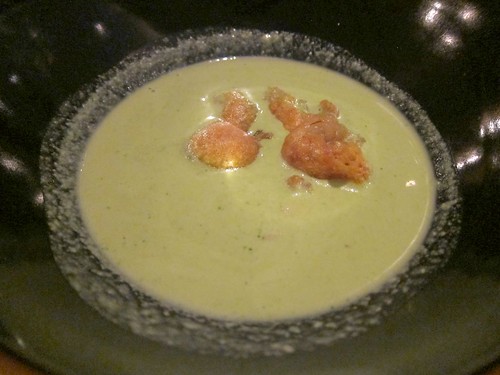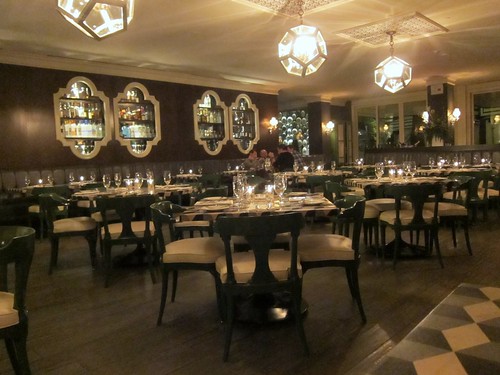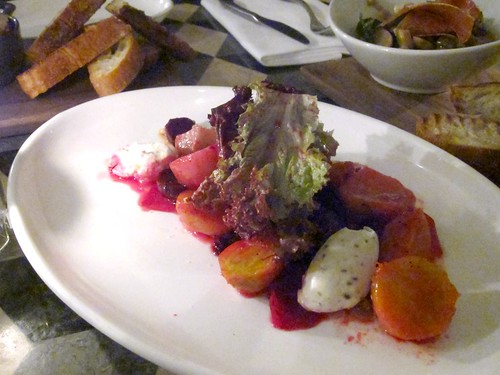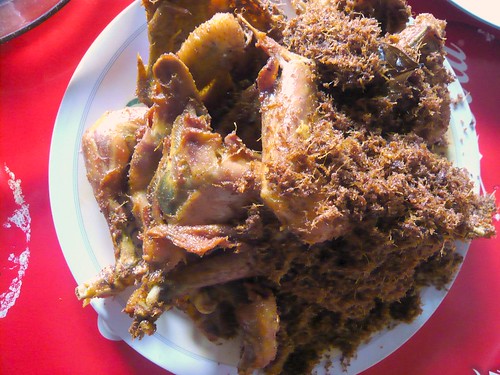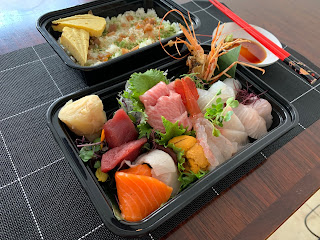Magnum Pop-Up with Joseph Mahon and David Haskell
Oftentimes pop-up restaurants leave you to your own devices as far as booze-pairing goes. The team of chef Joseph Mahon and sommelier David Haskell (dubbed 'Magnum') promised to be different -a full tasting menu with pairings, and their own back-of-house and front-of-house team.
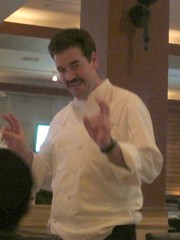
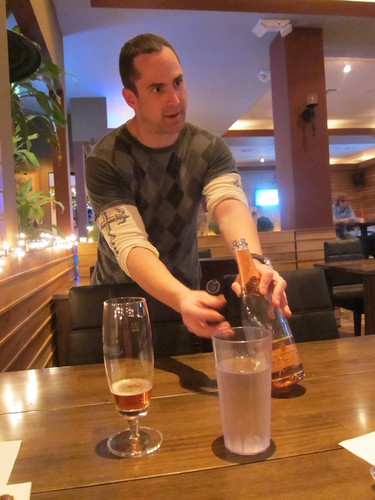
Chef Joseph Mahon was the latest Bastide "alum" and trained under Daniel Boulud and David Bouley in New York before moving back to California to work at David Myers' Sona. David Haskell had also worked in New York, including Le Cirque, before opening Bin 8945 in West Hollywood, which he then sold a couple years back. The pop-up was held at Biergarten in Koreatown. Koreatown?? Considering David Haskell's notorious love for Korean food, it wasn't that surprising. Mahon's menu turned out to be quite influenced by Asian cuisine (kimchi included). The pairing was also a nice mix of wine, beer, sake, and soju (hey, we're in Koreatown).
I was accompanied by Eating LA whose birthday, like mine, was coming up. It ended being a great pre-birthday dinner for both of us (read her post here).
Haskell visited each table for each course to explain the pairing that he had chosen.
The first course was Carrot Pudding with orange granita and shaved peanuts.
Paired with: NV Jules et Michel Beauchamp: Champagne, France: Chardonnay, Pinot Noir, Pinot Meunier
#2: Coconut Soup (mussels, tapioca, cilantro pistou, lime)
Wakatake "Onigoroshi", Junmai Daiginjo: Shizuoka, Japan
Yes, it did say "tapioca" on the menu but nonetheless I was surprised by the texture it gave; the soup was a very pleasant surprise filled with great mussels. This dish along with a few others that night were nice examples of how seamlessly Chef Mahon can incorporate influences from Asian cuisine.
The richness of the coconut soup balanced out the slight bitterness of the sake.


